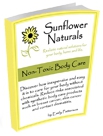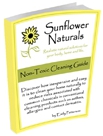Asthma is a medical condition that causes inflammation of the airways in the lungs, chest tightness, shortness of breath and coughing. Asthma affects more than 1 in 10 children and 1 in 12 adults in the United States. In addition to the steadily increasing rate of asthma sufferers, the number of asthma deaths per year has dramatically risen since 1980. Currently, 11 people die every day from asthma. Asthma costs our country over $56 billion per year in treatment, medications and lost wages, or a cost of over $3,000 per year for each person with asthma, according to the CDC publication, Vital Signs: Asthma in the US: Growing Every Year.
A cure for one type of asthma, phthalate ester-induced asthma, may be on the horizon. Researchers at the Institute of Clinical Medicine, College of Medicine, Kaohsiung Medical University exposed human lung tissue to a variety of phthalate esters to induce asthma in the tissue. They then exposed the phthalate-induced asthmatic human lung tissue to essential oils of ginger. The results of the study showed that extracted oils of ginger reversed the tissue changes caused by exposure to phthalates.
Although further testing is needed, there may soon be a cure for phthalate-induced asthma. This can mean the end of suffering for millions of people around the world who have phthalate-induced asthma. We can only hope that additional studies will be conclusive and pharmaceutical companies will quickly act on this cure for phthalate-induced asthma so the aromatics of extracted essential oils of ginger can be available in only a few years.
|
|
While no one knows the exact cause of phthalate-induced asthma, it appears as though exposure to phthalates may be a contributing factor. Until a cure for phthalate-induced asthma is developed by leading drug companies, there are ways to reduce exposure to phthalates to reduce the risk of developing phthalate-induced asthma.
Phthalates are used in a wide variety of consumer goods. Phthalate esters are used to bind plastics, as a fixative for synthetic fragrances in cleaning and body care products and many cosmetics as well as numerous home furnishings. Some of these include: liquid soap, bar soap, shampoo, conditioner, lotion, cream, anti-perspirant, shaving cream, after-shave, cologne, make-up, laundry soap, fabric softener, room sprays, carpet powder, plug-in deodorizers, dish soap, dishwasher soap, floor cleaner, bathroom cleaner, glass cleaner, counter spray, plastic bottles, plastic dishes, electronics, office supplies, plastic jewelry, plastic combs, plastic brushes, blow dryers, paints, plastic sinks and tubs, synthetic fabric, adult toys, children's toys, plastic pipe, vinyl flooring, hardwood flooring, carpeting, plastic food storage containers, plastic bags, pill coatings, food packaging, vinyl/plastic shower curtains and more. Phthalate esters are also found in settled house dust.
You can reduce exposure to phthalates and reduce the risk of developing phthalate ester-induced asthma by avoiding as many of the above products as possible or switching to alternatives such as phthalate-free cleaning and body care products. Fabric shower curtains are one way to reduce exposure to phthalates in the bathroom. Open windows at least once a week to exchange phthalate ester-laden air with outdoor air, which contains a far lower concentration of phthalate esters.
|
Resources:
April 2011: Ginger suppresses phthalate ester-induced airway remodeling.
Institute of Clinical Medicine, College of Medicine, Kaohsiung Medical University , No. 100 Shih-Chuan first Road, Kaohsiung 807, Taiwan.
Moreover, [6]-shogaol, [6]-gingerol, [8]-gingerol, and [10]-gingerol, which are major bioactive compounds present in Zingiber officinale , suppress phthalate ester-mediated airway remodeling. This study suggests that ginger is capable of preventing phthalate ester-associated asthma.
PMID: 21370925 [PubMed - in process]
May 2010: An assessment of the ability of phthalates to influence immune and allergic responses.
Faculty of Life Sciences, University of Manchester, Michael Smith Building, Oxford Road, Manchester, M13 9PT, UK
The epidemiological data provide some evidence that exposure to phthalates may be associated with increased risk of development of allergies and asthma, however, the lack of objective exposure information limits the interpretation.
PMID: 20371260 [PubMed - indexed for MEDLINE]
April 2010: Phthalate exposure and asthma in children.
Public Health Sciences, Karlstad University, Karlstad, Sweden
Thus, some of the early key mechanisms in the pathology of allergic asthma could possibly be targeted by phthalate exposure.
PMID: 20059582 [PubMed - indexed for MEDLINE]
March 2010: Dibutyl phthalate-induced thymic stromal lymphopoietin is required for Th2 contact hypersensitivity responses.
Department of Immunology, University of Washington, Seattle, WA
These data suggest that skin-derived dendritic cells are direct or indirect targets of TSLP in the development of type 2 immune responses in the skin, where TSLP drives their maturation, accumulation in skin draining lymph nodes, and ability to induce proliferation of naive allergen-specific T cells.
PMID: 20173025 [PubMed - indexed for MEDLINE]
February 2010: Maternal bisphenol a exposure promotes the development of experimental asthma in mouse pups.
Department of Pediatrics, Child Health Research Center, University of Texas Medical Branch, Galveston, TX 77555-0366, USA.
Perinatal exposure to BPA enhances allergic sensitization and bronchial inflammation and responsiveness in a susceptible animal model of asthma.
PMID: 20123615 [PubMed - indexed for MEDLINE]
February 2010: Mono(2-ethylhexyl) phthalate induces both pro- and anti-inflammatory responses in rat alveolar macrophages through crosstalk between p38, the lipoxygenase pathway and PPARalpha.
Department of Air Pollution and Noise, Division of Environmental Medicine, Norwegian Institute of Public Health, Oslo, Norway
Airway inflammation is important in asthma pathogenesis. Recent epidemiological data have indicated an association between asthma symptoms in children and exposure to di(2-ethylhexyl) phthalate (DEHP).
PMID: 19938896 [PubMed - indexed for MEDLINE]
January 2010: Allergy-related cytokines (IL-4 and TNF-alpha) are induced by Di(2-ethylhexyl) phthalate and attenuated by plant-originated glycoprotein (75 kDa) in HMC-1 cells.
Molecular Biochemistry Laboratory, Biotechnology Research Institute and Center for the Control of Animal Hazards Using Biotechnology (BK21), Chonnam National University, 300 Yongbong-Dong, Gwang-ju 500-757, South Korea
Phthalate esters as plasticizers have been widespread in the environment and may be associated with development of allergic diseases such as asthma and atopic dermatitis(eczema).
PMID: 19938896 [PubMed - indexed for MEDLINE]
September 2009: Phthalate ester-induced thymic stromal lymphopoietin mediates allergic dermatitis in mice.
Drug Discovery Research, Kyoto R&D Centre, Maruho Co., Ltd, Chudoji, Kyoto, Japan.
Taken together, DBP-induced TSLP during the sensitization phase plays a role in establishing FITC-induced CHS and may be one of the causes of Th2 commitment in the model, suggesting that certain environmental toxins, such as DBP, may endow pro-allergic and atopic predisposition in humans or animals.
PMID: 19740346 [PubMed - indexed for MEDLINE]
July 2008: The role of exposure to phthalates from polyvinyl chloride products in the development of asthma and allergies: a systematic review and meta-analysis.
Institute of Occupational and Environmental Medicine, University of Birmingham, Birmingham, United Kingdom
Epidemiologic studies show associations between phthalate exposure in the home and asthma and allergies.
PMID: 18629304 [PubMed - indexed for MEDLINE]
October, 2007: Home Spray Cleaners Could Raise Asthma Risk: Spritzing just once a week boosted odds by 50%, study found
U.S. National Library of Medicine, 8600 Rockville Pike, Bethesda, MD 20894
National Institutes of Health | Department of Health & Human Services
"Cleaning sprays, especially air fresheners, furniture cleaners and glass cleaners, had a particularly strong effect. The risk of developing asthma increased with the frequency of cleaning and number of different sprays used, but on average was 30 to 50 percent higher in people regularly exposed to cleaning sprays than in others," said the study's lead author, Jan-Paul Zock, a research fellow at the Centre for Research in Environmental Epidemiology at the Municipal Institute of Medical Research in Barcelona, Spain.
"Cleaning compounds are generally just tested to make sure that they don't kill people or cause cancer," noted Dr. David Rosenstreich, director of the division of allergy and immunology in the department of medicine at Montefiore Medical Center and Albert Einstein College of Medicine in New York City. "But, these products may not be safe for asthmatics to breathe in. And, if it's not safe for asthmatics, it's probably not safe for anyone else," he said.
US News and World Report
August 2007: Indoor residential chemical emissions as risk factors for respiratory and allergic effects in children: a review.
Lawrence Berkeley National Laboratory, Indoor Environment Department, Berkeley, CA 94720, USA
A growing body of research has associated household chemical emissions with risk of asthma, allergies, and pulmonary infections. Elevated risks were also reported for renovation and cleaning activities, new furniture, and carpets or textile wallpaper. Composite wood materials that emit formaldehyde, flexible plastics that emit plasticizers, and new paint have all been associated with increased risks of respiratory and allergic health effects in children. Elevated risks were also reported for renovation and cleaning activities, new furniture, and carpets or textile wallpaper.
PMID: 17661923 [PubMed - indexed for MEDLINE]
March, 2007: Association between personal exposure to volatile organic compounds and asthma among US adult population.
Division of Health Services Research, Department of Family and Community Medicine, Texas Tech University Health Sciences Center, 3601 4th St, STOP 8161, Lubbock, TX, 79430, USA
Quote: OBJECTIVES: There is growing concern about adverse respiratory health effects from exposure to indoor air pollution. The purpose of this study was to analyze association between exposure to volatile organic compounds (VOC) and asthma in adults. CONCLUSION: In this cross-sectional study of a representative sample of the US population, environmental exposures to VOCs, especially aromatic compounds, were associated with adverse respiratory effects.
PMID: 15633477 [PubMed - indexed for MEDLINE]
June, 2006: Cleaning products and air fresheners: emissions and resulting concentrations of glycol ethers and terpenoids.
Atmospheric Sciences Department, Environmental Energy Technologies Division, Lawrence Berkeley National Laboratory, Berkeley, CA 94720, USA
Quote: PRACTICAL IMPLICATIONS: While effective cleaning can improve the healthfulness of indoor environments, this work shows that use of some consumer cleaning agents can yield high levels of volatile organic compounds, including glycol ethers--which are regulated toxic air contaminants--and terpenes that can react with ozone to form a variety of secondary pollutants including formaldehyde and ultrafine particles. Persons involved in cleaning, especially those who clean occupationally or often, might encounter excessive exposures to these pollutants owing to cleaning product emissions.
PMID: 16583937 [PubMed - indexed for MEDLINE]
October 2004: The association between asthma and allergic symptoms in children and phthalates in house dust: a nested case-control study.
Swedish National Testing and Research Institute, Borås, Sweden
Global phthalate ester production has increased from very low levels at the end of World War II to approximately 3.5 million metric tons/year. This study shows that phthalates, within the range of what is normally found in indoor environments, are associated with allergic symptoms in children. Given the phthalate exposures of children worldwide, the results from this study of Swedish children have global implications.
PMID: 15471731 [PubMed - indexed for MEDLINE]
|
|



